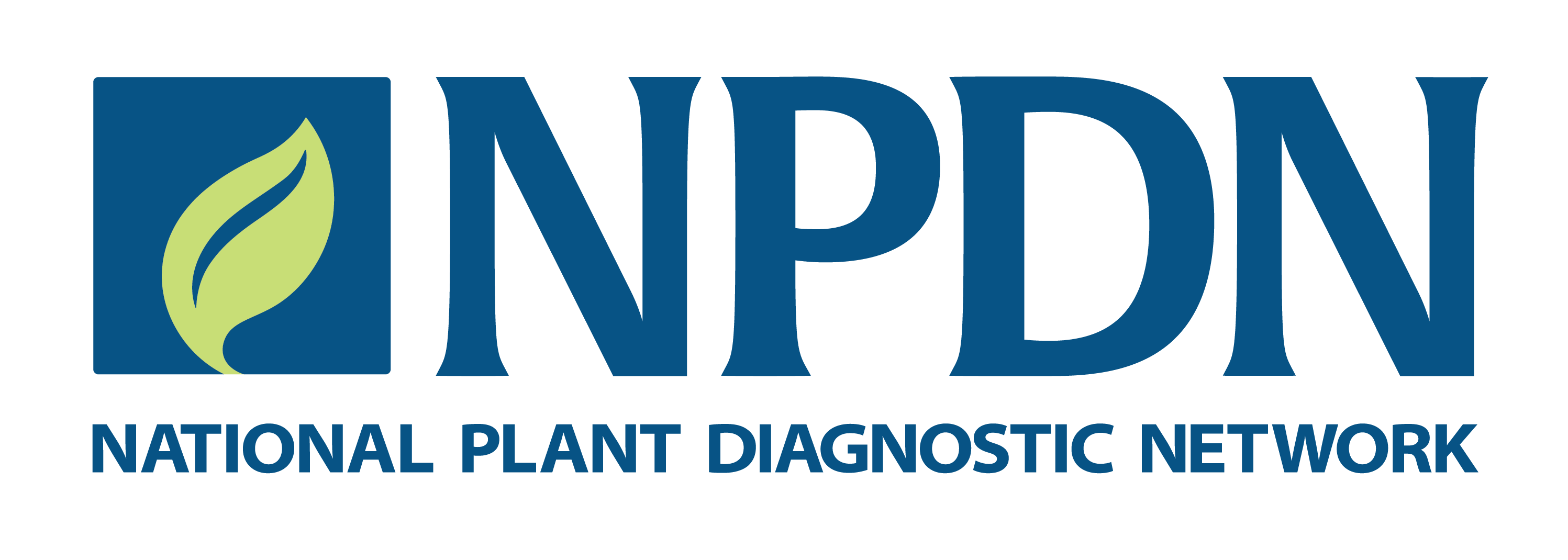| Code | Lab Method | Description |
|---|---|---|
| BAS | Bioassay | Includes inoculation of plant, plant tissue, or soil with a microorganism. Also includes use of indicator plants to determine chemical injury (e.g. herbicide, ethylene), hypersensitive response or virus through mechanical inoculation. |
| BCH | Biochemical | Tests carried out to differentiate between organisms and biovars based on resistance/tolerance, assimilation/ enzyme production, fermentation, substrate testing, amino acid or lipid tests (FAME, MALDI-TOF),and metabolite production ( e.g BIOLOG). This may include gram reaction or oxidase tests. |
| CLT | Culturing | Fungi, oomycetes or bacteria isolation from plant tissue, subculture and induction of mycelial or bacterial colony growth, characteristics, and/or sporulation on various media types (e.g. selective, semi-selective and other routine media). Soil dilutions using media for examination of microorganisms. |
| CPC | Conventional PCR | This includes conventional or endpoint polymerase chain reaction (PCR) with specific primers. Amplification products are visualized on an agarose gel or by other means (e.g. bioanalyzer). Multiplex PCR, nested PCR and reverse-transcription-PCR ( RT-PCR) are also included. |
| ELM | Electron Microscopy | Includes transmission EM (TEM) and scanning EM (SEM) for observation of microbes under very high magnification to visualize organelles or small structures. |
| ELS | ELISA | Enzyme-linked immunosorbent assay (ELISA). A lab based method which uses antibodies in a enzyme immunoassay to detect the presence of a pathogen, usually an antigen, in a wet sample. This usually involves observing color change to determine target presence. |
| IMG | Image | Symptoms and/or patterns, signs (i.e. macroscopic structures), arthropods, observed from an image(s) digital or printed. |
| INC | Inclusion Body | Cytological examination for the presence of intracellular inclusion bodies by light microscopy (vital staining) and by thin section electron microscope. |
| INU | Incubation | Plant specimens incubated in a moist chamber to induce microorganism signs, including baiting, soil baiting, and tissue floats. |
| ISO | Isothermal amplification | This includes any isothermal amplification method including Loop-mediated isothermal amplification (LAMP), Recombinase Polymerase Amplification (RPA), Strand displacement amplification (SDA), Helicase-dependent amplification (HAD), Nicking enzyme amplification reaction (NEAR) and nucleic acid sequence based amplification (NASBA). This includes all isothermal methods that are analyzed in real-time or post-reaction, whether it is for DNA or includes a reverse transcriptase step for RNA. |
| LFD | Lateral Flow Device (LFD) | Also called lateral flow tests or lateral flow immunochromatographic assays. These use similar technology to a pregnancy test and include products such as the Agristrip (Bioreba), Immunostrip (Agdia) Rapid Plant Disease Tests (Pocket Diagnostic),Alert LF (Neogen) and others. |
| MCL | Molecular (Other) | Other molecular technique that does not fit into the molecular categories listed (e.g. newly developed molecular methods or established methods which are not widely used in diagnostics labs, such as micro and macro-arrays). |
| MIC | Microscopic | Includes any method of light microscopy regardless of method of illumination. |
| NME | Nematode Extraction | Includes soil or plant tissue, including Baermann funnel, tray method, flotation, sedimentation and sieving, elutriation, centrifugal flotation, and flotation flocculation, and sieving. May involve nematode counts. |
| NSQ | Next generation sequencing | This refers to the various advanced sequencing platforms such as Pacific Biosciences, Illumina, Ion Torrent, SOLiD, Nanopore sequencing and any other advanced sequencing technology. |
| PCR | Polymerase Chain Reaction | This includes conventional or endpoint polymerase chain reaction (PCR) with specific primers. Amplification products are visualized on an agarose gel or by other means (e.g. bioanalyzer). Multiplex PCR, nested PCR and reverse-transcription-PCR ( RT-PCR) are also included. Also includes both probe- and non-probe-based assays (e.g. TaqMan and SYBR green respectively) in which target amplification is visualized in real-time. This category can be used for droplet digital PCR (ddPCR) since the primer/probe sequences are likely to be TaqMan assays. This also included multiplex or single tube nested qPCR where the PCR is monitored in real-time. This also includes PCR where reverse-transcription (RT-PCR) is undertaken prior to qPCR for RNA detection. |
| RPC | Real-time PCR | Also known as quantitative PCR (qPCR). This includes both probe- and non-probe-based assays (e.g. TaqMan and SYBR green respectively) in which target amplification is visualized in real-time. This category can be used for droplet digital PCR (ddPCR) since the primer/probe sequences are likely to be TaqMan assays. This also included multiplex or single tube nested qPCR where the PCR is monitored in real-time. This also includes PCR where reverse-transcription (RT-PCR) is undertaken prior to qPCR for RNA detection. |
| SEQ | Sequencing | This refers to basic DNA sequencing (i.e. Sanger or chain termination sequencing) that is used to generate sequences, either single locus or multiple loci, which are compared with sequences in available databases. |
| SLA | Soil Analysis | Soil analysis may include, measuring pH and/or soluble salts, nutrient analysis, and other chemical or physical characteristics. |
| SRG | Serological (Other) | Any other antibody based detection method that is not ELISA or a lateral flow device (e.g. certain Biosensors and certain fluorophore-linked immunosorbent methods). |
| TAN | Tissue Analysis | Tissue analysis includes nutrient analysis and other chemical or physical characteristics of leaves, fruit, tubers, seeds, wood, or other plant parts. |
| TST | Test Lab Method | Only used for testing purposes, not a valid lab method for samples. |
| VIS | Visual Observation | Patterns, symptoms and signs observed from a submitted sample. May include evaluation of provided written or verbal descriptions/conversations. |
Lab Method Dictionary

NPDN supports plant health and biosecurity in U.S. agricultural and natural ecosystems by providing expert diagnostic capacity, communication, coordination, and quality pest and disease diagnostic information.
Search
Copyright © 2026. All rights reserved.
